Facebook and Twitter

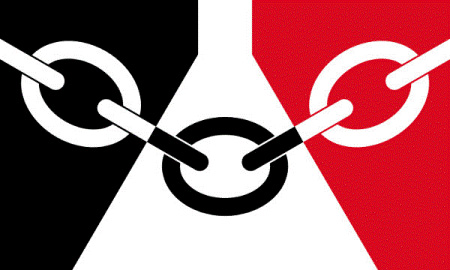
|
Facebook and Twitter |
 |
 |
Story Reproduced from Bilston Magazine by permission of the author George Mainwaring
It surprises many, including myself, that Bilston was once the proud owner of a golf course: and a very popular one at that. After being informed of this fact by Bilston Magazine's editor Simon Archer, I was intrigued to find a historical review of Bilston Golf Club written by Mike Fones. and it is he I must thank for this article, as 'Skylarks, Sticklebacks, Newts and Golf Balls' is an excellent read and can be found in the Wolverhampton Archives.
If still in existence today. the golf course would be found in the grounds of Moseley Park School, the parkland nearby and a housing estate. It would therefore border Proud's Lane, Cumberland Road, Holland Road and Bunkers Hill Lane.
The thirty five acres contained nine holes and began its life in July 1920 when the Housing Committee of Bilston Urban District Council met and discussed suitable sites for the playing of golf. Eventually the location was agreed and by 1922 the course was up and running. The club's hope was that this would "foster and encourage the playing of the game of golf and to promote a live social intercourse between the members".
It had the desired effect. and during the 1920s the golf club became popular with local wealthy businessmen: it was a welcome change to be able to walk around tranquil areas that were a short distance from a heavily industrialised town.
Below are the teams for a Captain versus Vice Captain match played in 1933.
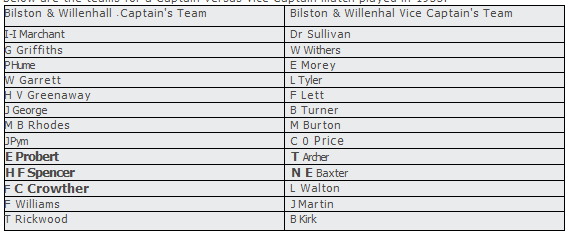
Trophies were established and presidents and captains were elected every year. meaning the club was well organised and offered stability for its members. By 1930 the club had secured a twenty one year lease and so improvements began on the site meaning confidence with the club rose and its popularity grew. The consistent hard work by greenkeeper Freddie Proud meant that Bilston Golf Club was a well-kept and desirable place to attend.
Many of Bilston's wealthy residents (headmasters. grocers and builders) frequented the course with memberships available for men, women and juniors (12 - 21 years). The club brought a community feel to the area, with the club being used for bridge, billiards and quizzes. Furthermore, a handful of local residents would caddy for the members, being paid quite handsomely at times.
By 1938 meetings were held to discuss improving the club further and during 1939 it was agreed that the wooden clubhouse would be replaced with a brick one, the course layout would be extended and the old wooden boundary fencing would be replaced. Unfortunately, these plans did not come into fruition, as the commencement of the Second World War meant money for the war effort became top priority.
During the war years the course was not consistently maintained with groundsman Freddie Proud only being able to work sporadically. Some play would occur. but not on a par (excuse the pun) with its thriving populanty in the 1930s. The club was only kept alive by its social side and the hard work of local children such as Geoff Hawkins, John Bryan and Ivan Bennett. who would mow and scythe lawns after school. order stock and otter some kind of consistency in a chaotic period.
It was hoped that after the war the club would pick up where it left off and for a while it seemed like this was the case. Members who enjoyed the course before the war rallied together to float a loan and get the club up and running. The membership reached 108 in the 1947/48 season and by 1949 this rose to 180. meaning the loan was fully repaid. Competitions took place again and during the 1949/50 season the number of members was the same as in 1937. Regrettably, this resurgence did not last.
By the 1952/53 season membership was dwindling. even though the club was in a positive financial position. The main problems were that the course was in a poor condition after the large mower broke down and the site had been reduced to 32 acres due to emergence of the Stowlawn estate, which contained residents that had moved from grimier surroundings to a location of wonderful greenery. These residents regularly ignored the boundaries to the course and many happy stories of residents taking advantage of this location can be found in Mike Fones's review.
Due to these factors, it is not surprising that old members. who had pushed for the resurgence, had moved on to better courses. By 1956 the course and the dream of a long lasting club evaporated as the town needed to relocate the rundown Bilston Boy's Grammar School and picked the site of the course. It is a shame that the Second World War interrupted what looked to be an ambitious project, but it is still spectacular that such a thing could be created through hard work and community spirit.

Thanks to Mr M. Jones of Milcote Drive. Willenhall for supplying some of the information for this article.
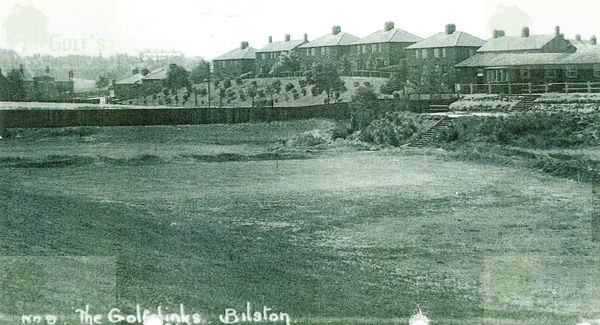 |
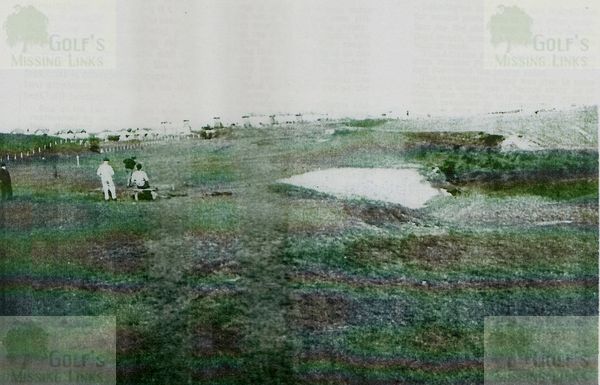 |
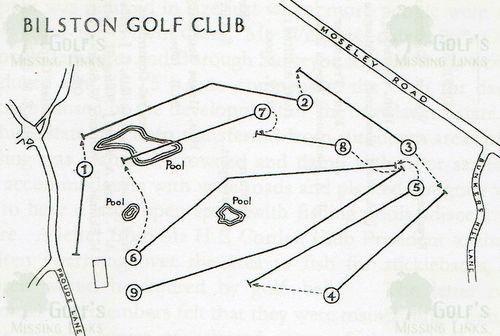 |
| The Photos were kindly supplied by Simon Archer of The Bilston Magazine |